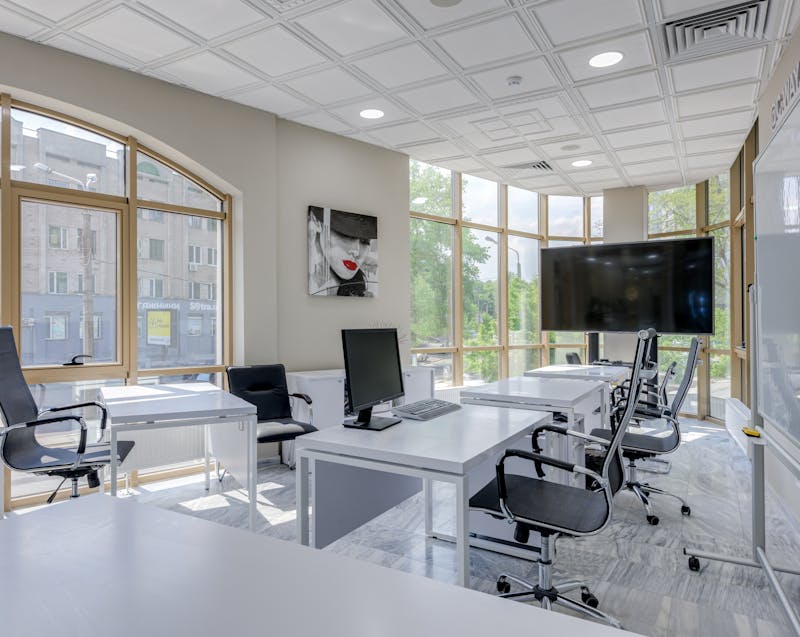The world has started to go back to normal. People who have spent over a year working inside the safety of their own homes are now being asked to return to the office. Although the pandemic is far from over, vaccination has made it possible for most to regain a sense of normalcy and venture outdoors for work or other activities.
But the threat is still around, and everyone is at risk of catching illnesses, not just COVID-19, in public spaces, including the office. Any shared space is a hotbed for the spread of potentially disease-causing viruses and bacteria. Using these facilities is a health risk.
The bathroom, in particular, is a common cause for concern. It is the one place inside the office that everybody uses every day, often multiple times throughout the day. Worse, it is where people urinate or defecate. A person’s discharges can contribute to the spread of germs on surfaces and in the air.
The Importance of Hygienic Bathrooms at the Office
The office restroom plays a vital role in the workplace for a variety of reasons. In fact, it is one factor that employees consider to determine if their employers care about them or not.
A national survey across the United States found that 63 percent of all workers rate their office bathrooms as “excellent” or “good.” However, one-third of the respondents said that their office bathrooms had clogged toilets, jammed toilet paper dispensers, and unpleasant smells.
Moreover, more than half of the respondents admit that they wash their hands for only five to 15 seconds. The U.S. Centers for Disease Control and Prevention recommend that people wash their hands for at least 20 seconds to rinse the germs away. To be sure, sing “Happy Birthday” twice.
Up to 11 percent of respondents shared that they often see people leave the office bathroom without washing their hands.
After the world has undergone and still undergoing a deadly pandemic, changes need to be done in the office bathroom to reduce the spread of germs and make employees feel safe to return to the workplace.

Less Contact, More Automation
Many diseases spread through contact. Although COVID-19 infections happen through exposure to contaminated droplets and aerosols, a large number of disease-causing viruses and bacteria thrive on surfaces. The doorknobs and the faucets can harbor germs and cause infections,
More public bathrooms have contactless features to promote hygiene. The faucet, for example, can use motion sensors to determine whether there is someone who needs to use it. Hands-free technologies prevent the spread of germs by reducing common-traffic touchpoints.
Automated toilet flushing has also become the norm nowadays. Toilets also come equipped with sensors to remove waste after someone uses it. It is best to talk to an expert plumber about the installation of automatic-flushing toilets.
Toilet Splash Solutions
There is also concern over contaminants being launched into the air by flushing the toilet. Whenever someone flushes the toilet, a cloud made of tiny water droplets emerges. These droplets contain viruses and bacteria that settle on the sink, floor, walls, ceilings, and all the other surfaces within and beyond the six-foot mark. People can also inhale these aerosols.
It has been suggested that every bathroom should have floor-to-ceiling stalls complete with its own sink, hand-dryer, paper towel dispensers, and, of course, toilet. This prevents droplets from traveling across the entire bathroom.
However, a much easier solution is to make closing the toilet lid a habit. Only 55 percent of adults in the United Kingdom close the lid after using the toilet. Almost three quarters of them said that they are more aware of hygiene practices.
The toilet lid prevents droplets from being propelled into the air. Its effect is similar to wearing a face mask. When you sneeze or cough, your masks prevent droplets and aerosols from your mouth from spreading in a room.
One study found that flushing the toilet with the lid up spreads particles as far as 1.5 meters and can remain in the air for up to 30 minutes.
The prevention of infection in public bathrooms, including in the workplace, requires more than just one change. It should be an entire lifestyle that prioritizes health over convenience or cost. Now that everyone is more aware of how diseases, not just COVID-19, spread, things need to change for the safety of everyone.
The office bathroom, which employees use as a measure of how much employers care, should undergo design shifts. Employers should consider little to zero contact fixtures and other novel ideas to prevent disease spread.





